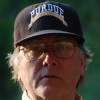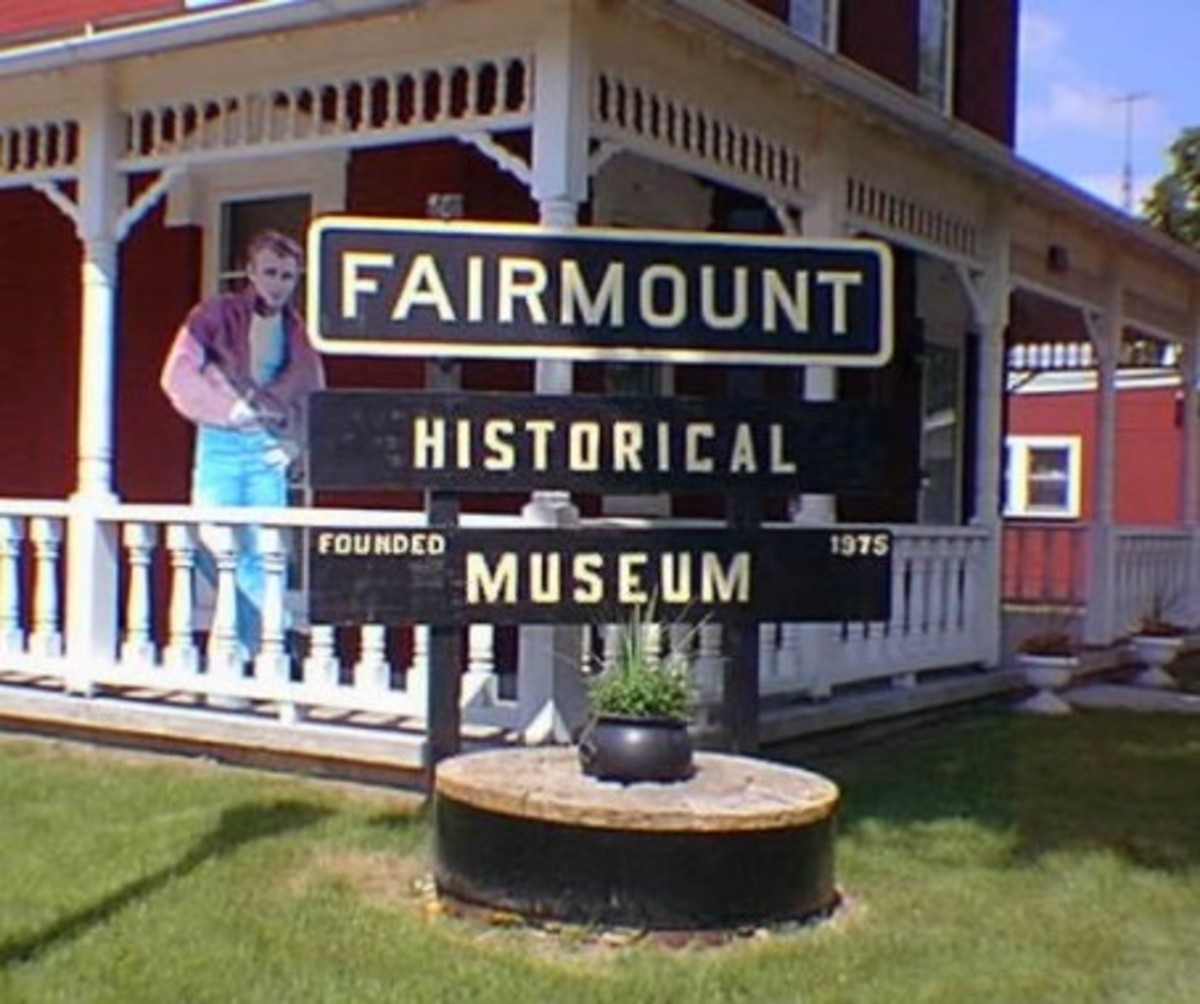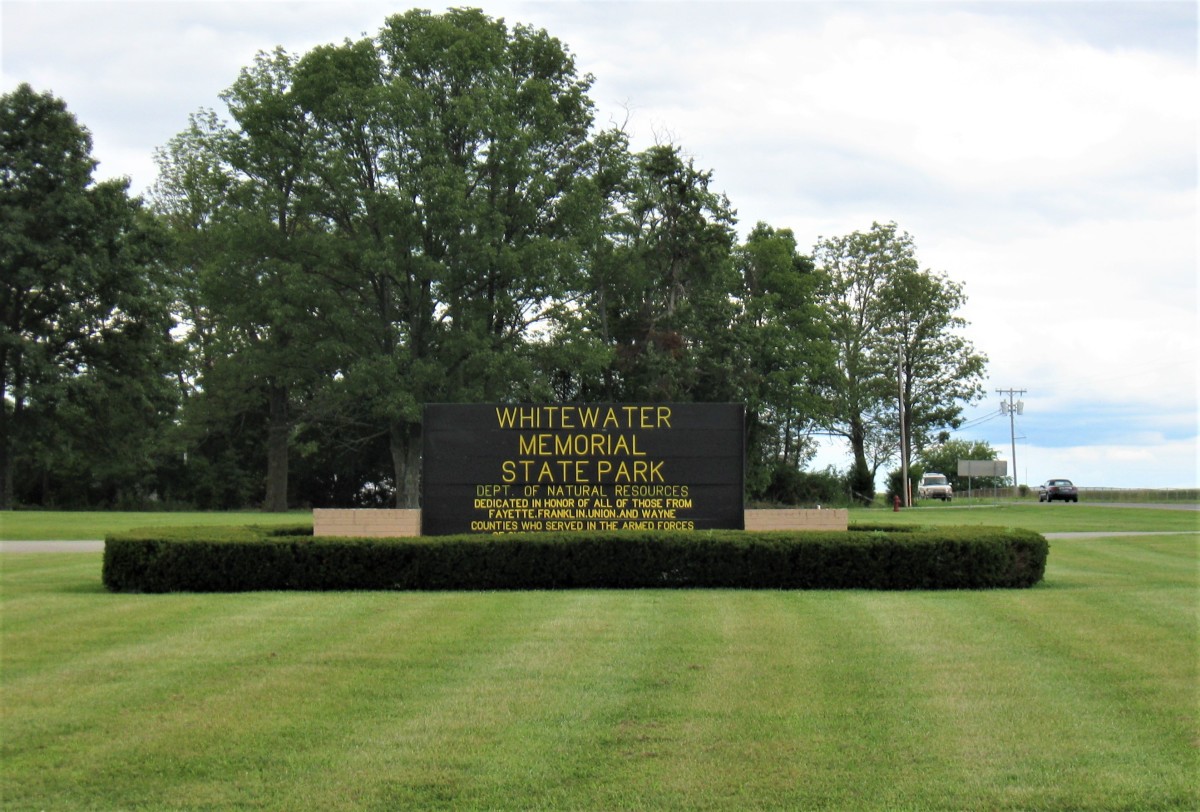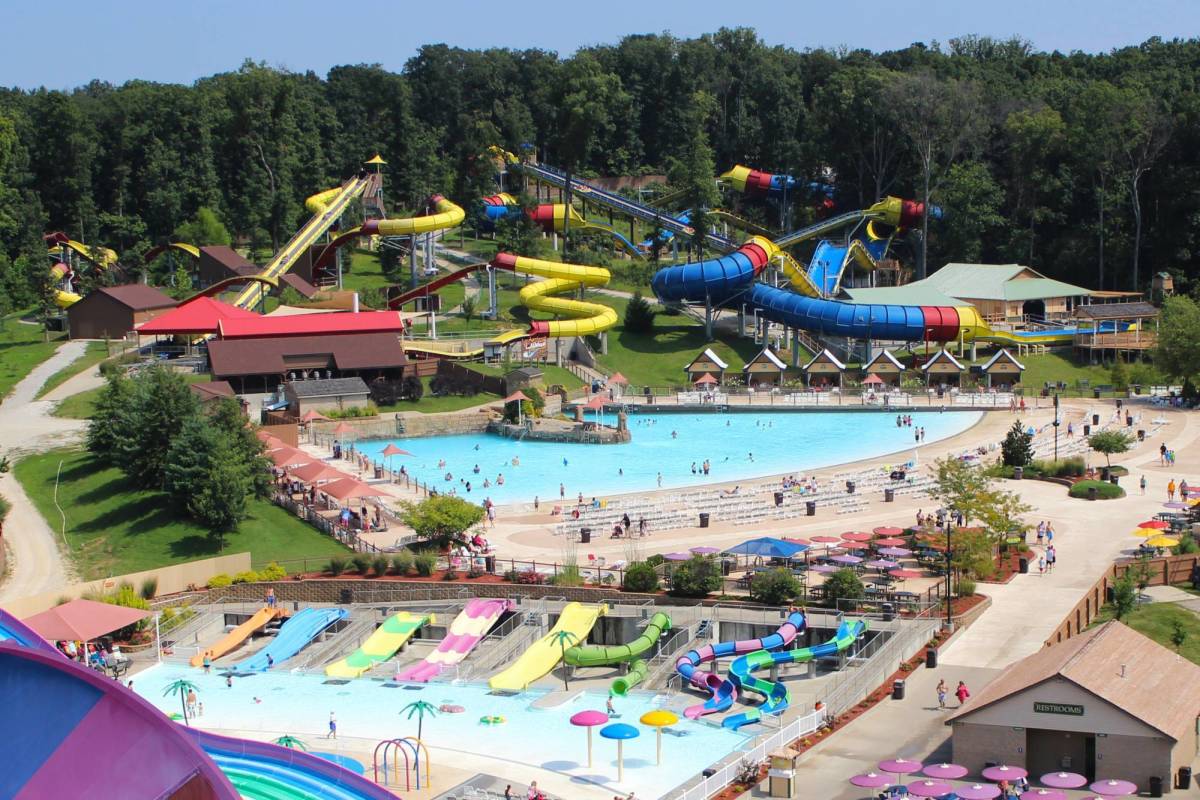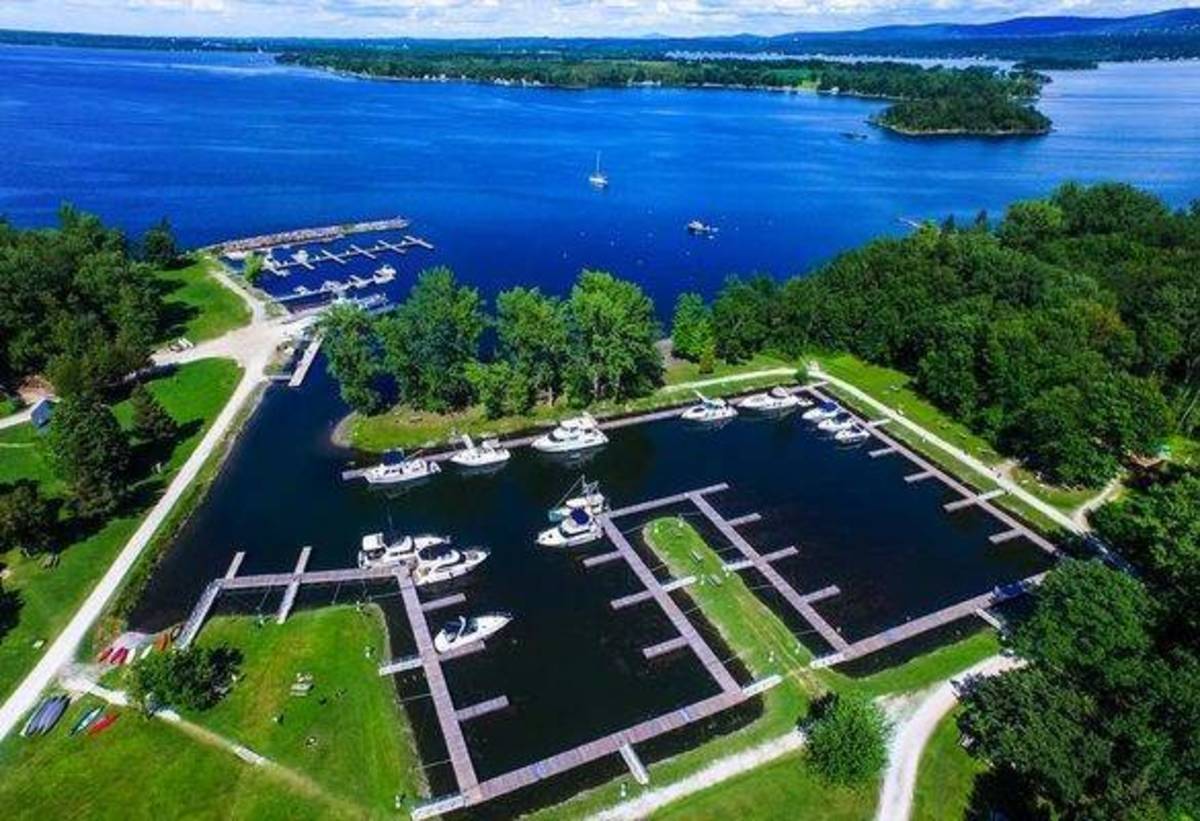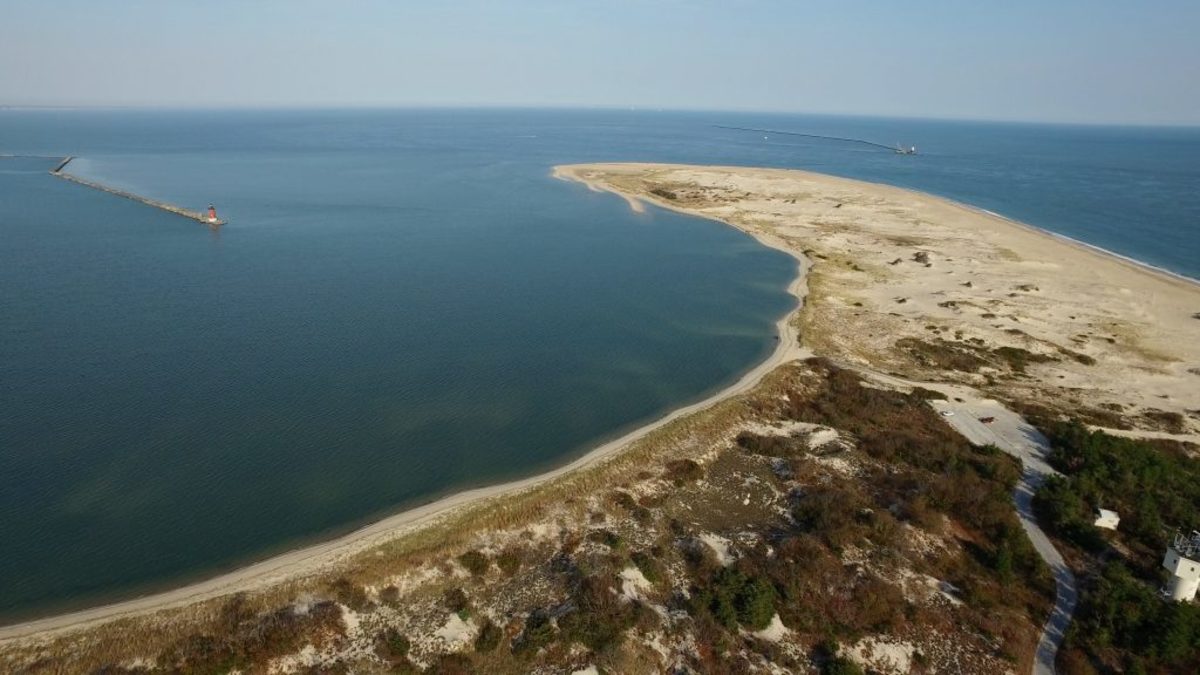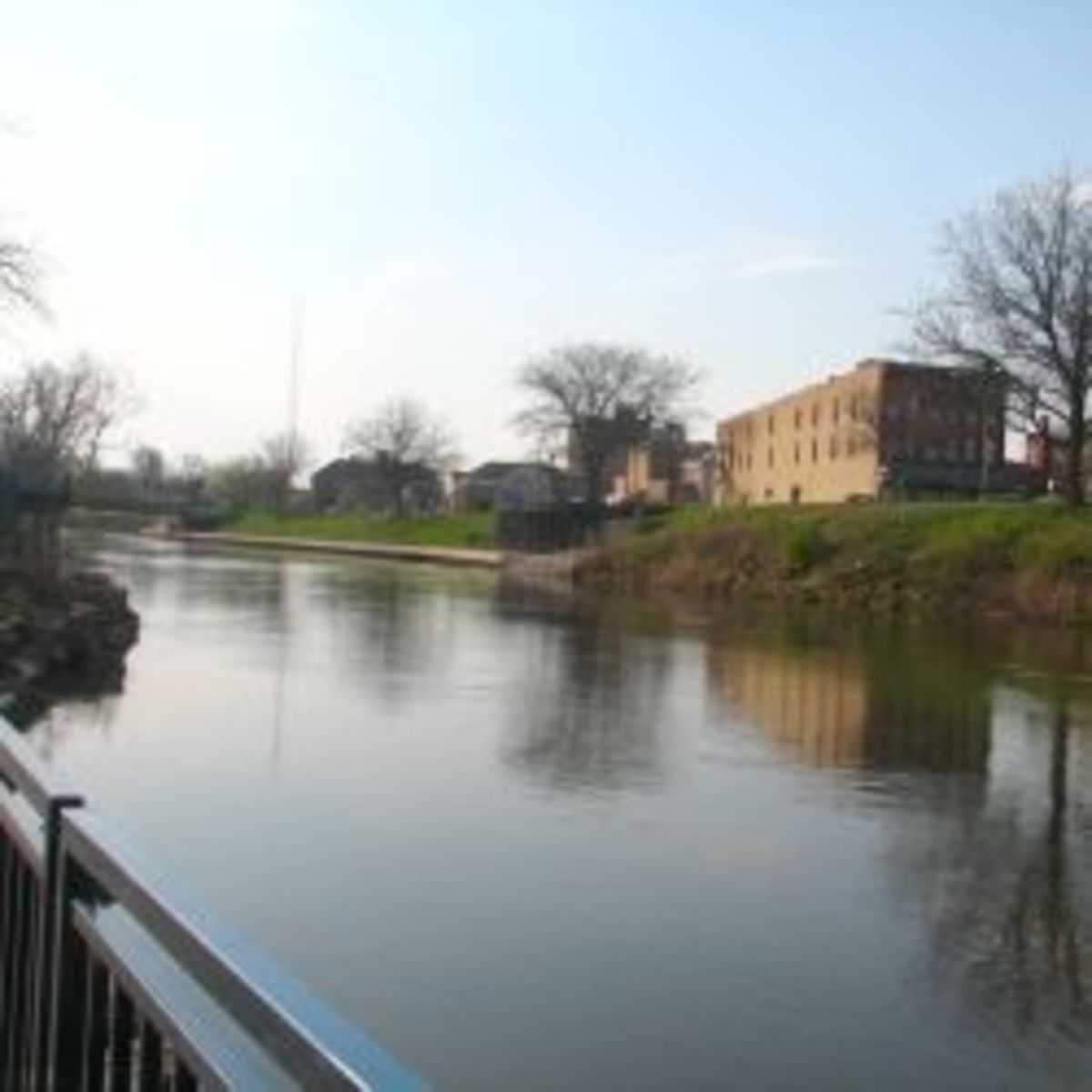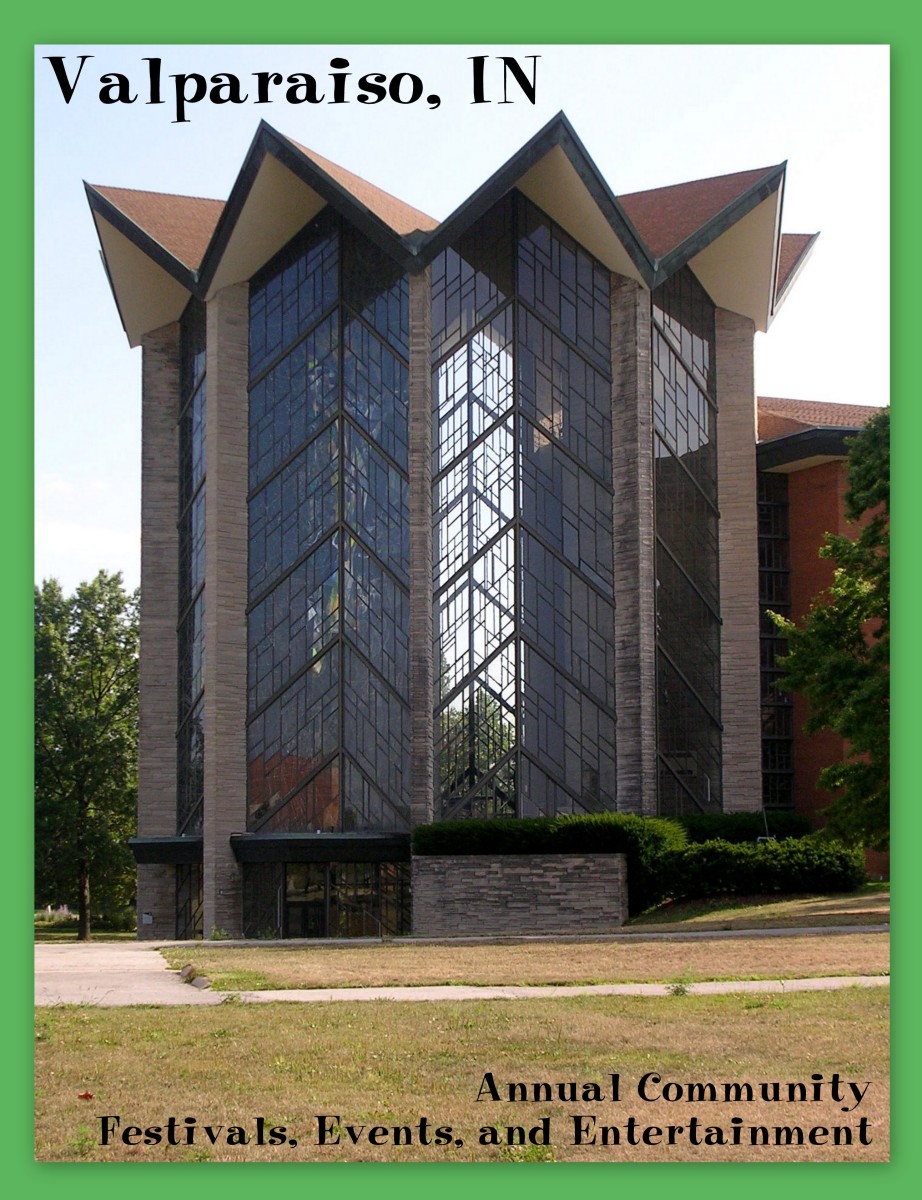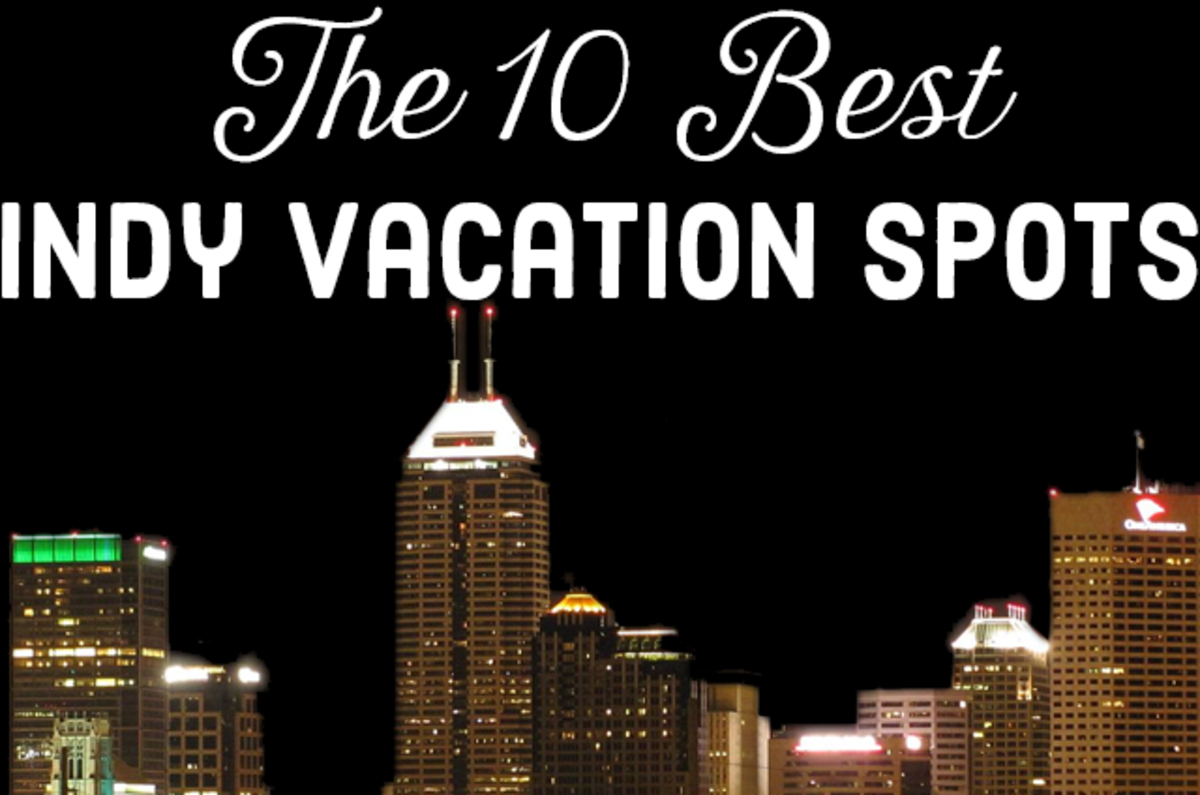- HubPages»
- Travel and Places»
- Visiting North America»
- United States
Indiana Attractions
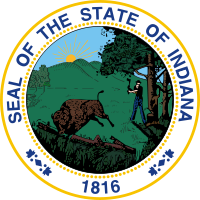
The purpose of this article is to connect several articles I have written about Indiana attractions and put them in historical perspective. You can visit the other articles by clicking on the links within the text.
Indiana joined the Union in 1816, which is also known as "The year without a summer" due to the eruption of Mount Tambora in Indonesia. On the right is the Indiana state seal. It shows a settler felling trees to create farmland and the buffalo leaving the state, which is something early Hoosiers longed for, since it is difficult to farm with buffalo roaming through your fields. Buffalo eventually did leave Indiana, but they have returned. You can see them today at Ouabache State Park near Blufton.
Before Europeans
Not a great deal is known about the history of Indiana before Europeans arrived, because the inhabitants did not leave any written record. We do know that Mound Builders inhabited Indiana. Their work can still be seen at the Angel Mounds State Historic Site near Evansville and Mounds State Park near Anderson. By the time Europeans first visited Indiana, the two most prominent tribes were the Miami and Shawnee.
The Miamis, led by Chief Little Turtle, inflicted several military defeats on the United States. Finally, a large and well-trained army under General "Mad" Anthony Wayne defeated the Miamis and there allies in the Battle of Fallen Timbers. William Wells, a white man who was captured and raised by the Miamis, fought with General Wayne after previously fighting with the Miamis.
Tecumseh, a Shawnee, sought to establish an Indian confederation to check the westward expansion of American settlers. This eventually resulted in the Battle of Tippecanoe, where William Henry Harrison led the American forces against Indians led by The Prophet, Tecumseh's brother. The Tippecanoe Battlefield is located a few miles northeast of Lafayette, at the edge of a small town called Battle Ground. William Wells become a U.S. Indian agent with the Miamis after the Battle of Fallen Timbers, and he had persuaded them to stay out of Tecumseh's confederation.

Internal Improvements
After Indiana joined the Union in 1816, their was much clamoring for "Internal Improvements" to allow for the economic development of the state. This involved building roads, canals and railroads to improve transportation. Indiana went on a canal building binge which later bankrupted the state. The Wabash & Erie Canal followed the Wabash River through much of the state, before connecting to the Ohio River at Evansville. It joined to a canal in Ohio that connected to Lake Erie. Railroads put the canals out of business when they came along, and only a few traces of them are left. One place is the town of Metamora, which is on a restored section of the Whitewater Canal.
Navigation on the Great Lakes was also important to early settlers. The original proposed northern border for Indiana was slightly south of the actual state border. It was moved a few miles north so that all states created from the Northwest Territory would have access to the Great Lakes. Indiana's 1858 lighthouse in Michigan City is now a museum.
Steamboats transported goods and people on the Ohio and other navigable rivers. In Aurora, on the Ohio River, one successful steamboat operator constructed Hillforest Mansion, which looks similar to a steamboat.
Underground Railroad
Indiana, like other northern states, had people who helped slaves from the South escape to Canada and freedom. This system was known as the "Underground Railroad". One of the most active stops was the home of Quakers Levi & Catherine Coffin, now the Levi Coffin State Historical Site. There you can see the secret rooms in the home & the false bottomed wagons in the barn where the escaping slaves were hidden.
Civil War
Numerous people who had significant roles in the American Civil War had Indiana connections. No one had a more significant role than President Abraham Lincoln. Lincoln was born in Kentucky, then moved to southwestern Indiana at the age of 7 with his family. At 21 Lincoln traveled westward to Illinois, where he found success as a lawyer and politician. Along with his friend Henry Lane from Crawfordsville Indiana, Lincoln helped form the Republican party from the remnants of the Whig Party
While Lincoln was President, Lane served in the U.S. Senate. Lew Wallace, another resident of Crawfordsville, was a general during the Civil War. He later achieved greater fame as the author of Ben-Hur.
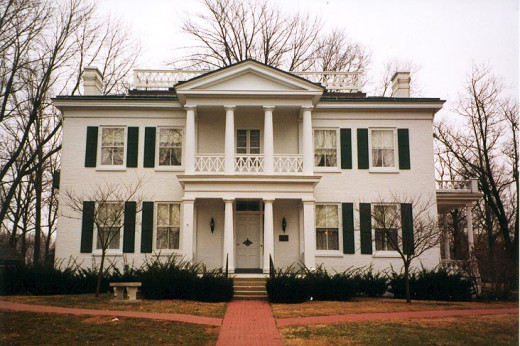
Indiana Gas Boom
Although they didn't know it at the time, coal miners in Eaton (near Muncie) hit natural gas in Indiana in 1876. They had drilled down about 600 feet when they heard a loud noise and began to smell a bad odor. Some of them believed they had drilled into Hell. They hole was plugged and forgotten about until 1884, when natural gas was discovered in Ohio. When news reached Indiana, those miners realized what they had encountered. The hole was reopened and extended another 300 feet down, and began producing natural gas. The Indiana Gas Boom was on.
At the time, there were no natural gas pipelines. Therefore, industries which required natural gas had to move to the gas fields. One of the biggest industries that needed gas was glass making. The city fathers of Muncie convinced the Ball Corporation to move their operations from Buffalo, New York by offering land, gas, money and railroad facilities. They began manufacturing glass containers there in 1888. Some of the other cities which flourished during the gas boom include Kokomo, Anderson and Fairmount. Numerous small glass makers moved into other cities where gas was available. The Greentown Glass Museum in Howard county has many examples of the glass products that were produced there.
The Trenton Gas Field as it was known, was the largest gas reserve known up to that time. Unfortunately, much of this resource was wasted. Many towns had flambeaux lights which burned gas day and night. These lights were banned by the state legislature in 1891. In 1893 a state official said "The waste has been criminal and the day of repentance is fast approaching, and can only be delayed by practicing the most rigid economy and unrelaxed efforts in the husbandry of this valuable resource of our State." By the turn of the century, pressure in the wells had dropped significantly and gas production was declining.
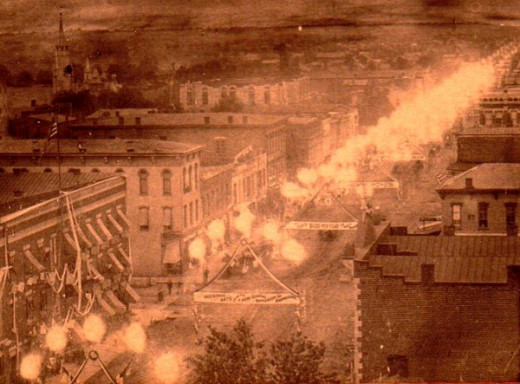
The State Park System
Colonel Richard Lieber was the driving force behind Indiana's state park system. As Indiana's centennial approached, he proposed creating state parks as a way to mark the occasion. The governor established a committee and appointed Lieber as its chairman. Although he had no budget, he was able to raise private funds. Under his leadership, the first ten state parks were established:
- McCormick's Creek (1916)
- Turkey Run (1916)
- Clifty Falls (1920)
- Indiana Dunes (1925)
- Pokagon (1925)
- Spring Mill (1927)
- Brown County (1929)
- Shakamak (1929)
- Mounds (1930)
- Lincoln (1932)
During the Great Depression the Civilian Conservation Corps was formed. They planted trees and built infrastructure in many of Indiana's state parks. Some of the structures they built are still in use today.
Today there are 25 parks in Indiana's state park system. Indiana has fewer than many other states, but they tend to be larger. It was a long time goal to have a state park within an hour's drive of everyone in the state. After years of trying, they finally established a park in the Lafayette area in 2004, Prophetstown State Park.
Agriculture
Agriculture has been, and continues to be a crucial part of Indiana's economy. Despite being the smallest state west of the Appalachians, Indiana ranks high in numerous agricultural products:
- Corn (5)
- Soybeans (3)
- Eggs (4)
- Turkeys (7)
- Ducks (1)
- Popcorn (2)
- Watermelons (6)
- Cantaloupes (5)
The vast majority of Indiana's early settlers came to farm. Especially in southern Indiana, many settlers came from the South, where they had to compete against the slave labor of the large plantations. Up until around 1900, farming was dependent upon animal power to plant and harvest crops. The era between 1900 and 1925 is sometimes referred to as the "Golden age of Agriculture". Production increased greatly due to the implementation of mechanized power. Also, less acreage needed to be set aside for the grazing of draft animals. The Fulton County Museum has a living history village dedicated to this period. They also have a round barn, which was popular in this time period. Over 200 round barns were built in Indiana, more than any other state.
Many farmers today have turned to agritourism to boost their income. There are many farms in the state that are open to visitors. In the fall, many of these have corn mazes
Automobiles
Indiana has always had a strong connection to the automobile industry. One of the earliest autos was built in Kokomo, Indiana by Elwood Haynes. Haynes was also a metallurgist who developed stainless steel and stellite. Today you can visit his house which is now the Elwood Haynes Museum. Some of the finest classic cars ever made were manufactured in Auburn Indiana. Many of these beautiful cars are on display at the Auburn Cord Dusenberg Museum.
Aviation
Wilbur Wright was born just a few miles east of New Castle Indiana. Today you can visit the Wilbur Wright Birthplace & Museum. Before the Wright brothers powered flight at Kitty Hawk in 1903, they performed many glider flights. They corresponded many times with Octave Chanute, who lived in Chicago. Many of Chanute's glider flights were conducted in Indiana, along the southern tip of Lake Michigan. Several Indiana pilots became aces during World War I:
- Paul Baer
- Thomas Cassady
- Weir Cook
- Karl Schoen
- Everett Cook
America's number one ace was Eddie Rickenbacker. Although he was from Columbus Ohio, Rickenbacker had a Hoosier connection. He raced in the Indianapolis 500 four times before World War I. Rickenbacker later purchased the Indianapolis Speedway and operated it until World War II. He also ran Eastern Airlines for a number of years.
Purdue University in West Lafayette has produced numerous astronauts, including:
- Gus Grissom (Second American to go into space)
- Neil Armstrong (First person to walk on the moon)
- Eugene Cernan (Most recent person to walk on the moon)
Criminals
Indiana has had its share of criminals. The most notorious was John Dillinger, who was born in Indianapolis. Of all the famous gangsters in the 1930s, he was the best known. His exploits in Indiana included numerous bank robberies and his famous escape from the Crown Point jail using a fake gun.
In the 1850s, a criminal gang known as the Blacklegs were based in Noble county, Indiana. They were involved in all sorts of crime in several states and a potion of Canada. Their criminal activity was curtailed when McGregor McDougle was lynched.
The first train robbery in the United States of a moving train occurred in Indiana on October 6, 1866. The Reno gang, led by Frank, Sim & Bill Reno, stopped a train in a remote section of Jackson county and robbed it of $13,000. They robbed a few more trains before being arrested and jailed in 1868. Vigilantes broke into the jail and lynched them.
Another notorious train robber from Indiana was Sam Bass. He was born near Mitchell, Indiana, but moved west before starting his life of crime. Bass was eventually killed in a shootout with Texas Rangers.
Entertainment
Hoosiers have found numerous ways to entertain themselves over the years. One of the most popular ways has been through basketball. From the inner city to rural areas, the sport is played. Drive through Indiana and you will find basketball hoops on garages, barns and just about every kind of structure imaginable. Indiana's basketball greats, such as Oscar Robertson & Larry Bird are enshrined at the Indiana Basketball Hall of Fame in New Castle, Indiana.
Before air conditioning, when the temperatures rose, people looked for cooler areas, which generally meant heading towards water. One such place was Cedar Lake, in northwestern Indiana. Exploiting its position not far from Chicago, Cedar Lake was once ringed by 42 hotels, and attracted big crowds during hot summer days. Today the old Lassen Hotel is now the Lake of the Red Cedars Museum. Another place in northern Indiana to escape summer heat was Lake Manitou in Rochester.
In the old days, entertainment was typically simpler activities than today. One such activity from bygone days is the carousel. There were once many manufacturers of carousels, but the very finest were made by Gustav Dentzl. Very few of his creations still exist today, but you can ride one at the Cass County Carousel in Logansport, Indiana. Kite flying is something that was more popular in simpler times, but it made one Farmland resident famous in recent times. Ansel Toney became famous after Charles Kuralt featured him on his popular "On the Road" television series.
Water Power
Water power was important in the development of Indiana. Before the widespread use of steam, it was essential for grinding grain. Some of the first places to be settled in the sate were places where water power was available. One such place was the town of Spring Mill, now Spring Mill State Park. The mill, shown below, features the classic overshot water wheel, which was uncommon in Indiana. Since the state is relatively flat, very few places have enough drop in water level to accommodate this type of water wheel. Most mills used turbine wheels, which generate power by turning the water to the side, and can be used where there is less change in water level. In the case of the Mansfield Roller Mill, it uses a turbine wheel for power. A later owner added a wheel which simply turns and provides no power. He wanted it to look "right" for visiting tourists.
Widely used for grinding grain in the 19th century, water power was used to generate electricity for small communities in the early 20th century. Very few of these mills still exist today. One of the exceptions is Greenfield Mills in northeastern Indiana. The mill grinds grain and provides electricity for 11 homes.
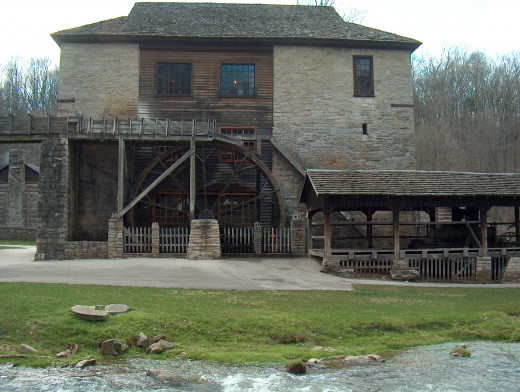
Wind Power
Wind power is enjoying a renaissance in Indiana. If you travel across portions of northern Indiana, you can see arrays of big three bladed wind turbines generating electricity. Years ago, much smaller windmills were used to pump water. You can still see some of these older style windmills if you travel through areas where Amish live. Another place you can find them is at the Mid-America Windmill Museum in Kendallville. Kendallville was once a center of windmill production. The biggest market was the western United States where they pumped water for livestock, although they were shipped worldwide.
Writers
Numerous writers have called Indiana home. Lew Wallace, a general during the American Civil War, was born in Brookeville and lived in Crawfordsville. His classic Ben-Hur: A Tale of the Christ became the best selling American novel of the nineteenth century, even outselling Uncle Tom's Cabin.
Gene Stratton-Porter was a naturalist & novelist, Over 20 of her works were published between 1903 and 1927, three years after her death. Although she liked writing nature books best, it was her romantic novels that made her famous and earned her the most money. Gene's best known work was A Girl of the Limberlost. Her home in Geneva, Indiana is now Limberlost State Historic Site. After the nearby swamp was drained, Gene and her husband moved to Rome City. That home is now the Gene Stratton-Porter State Historic Site.
Ernie Pyle was America's best known war correspondent during World War II. He became famous for his newspaper columns describing what the war was like for the average soldier. Born in Dana, Indiana he went on to major in journalism at Indiana University. Prior to the war Ernie was best known for his travel columns entitled The Hoosier Vagabond. Today his birthplace is now the Ernie Pyle World War II Museum.
Overview Map
Site of 1811 conflict between William Henry Harrison & The Prophet
